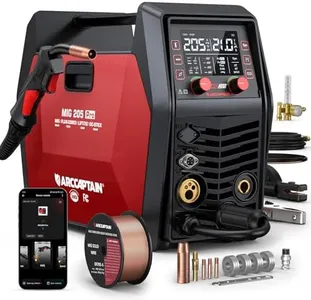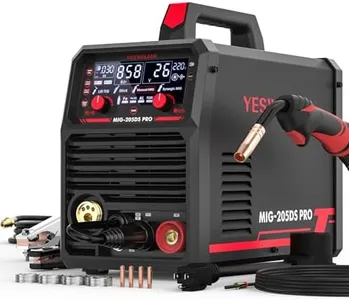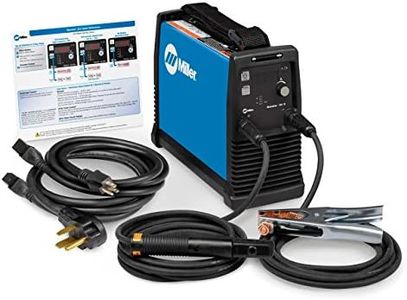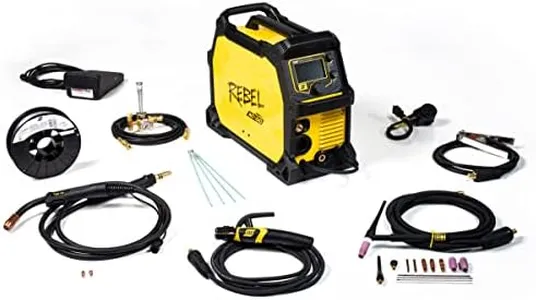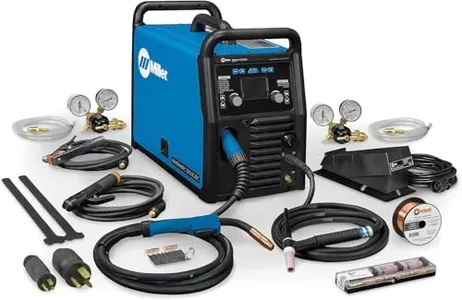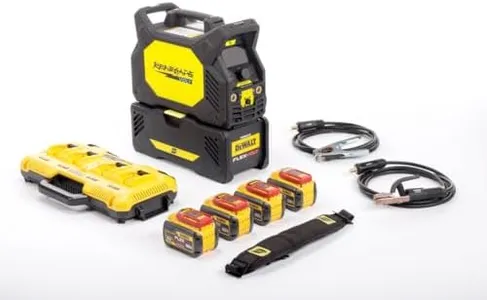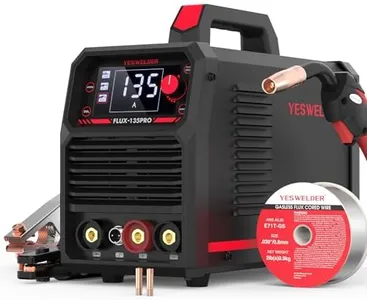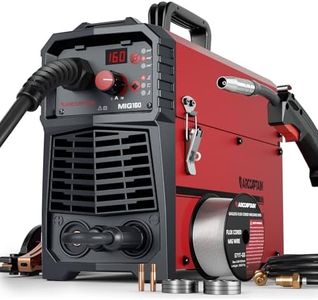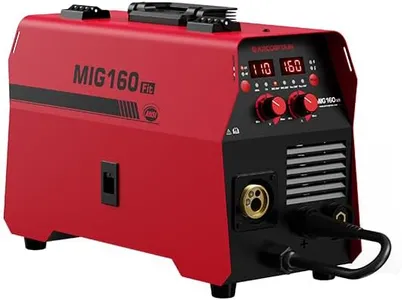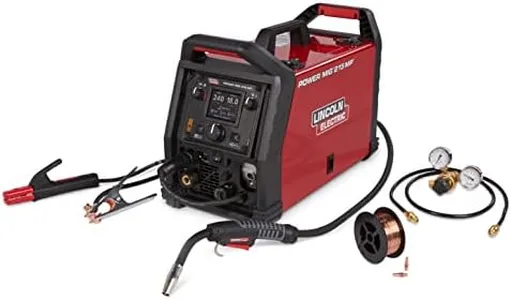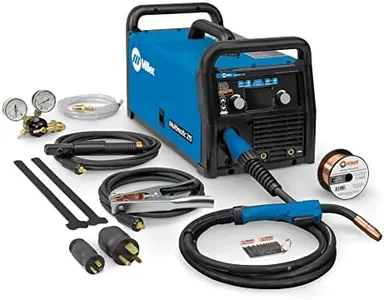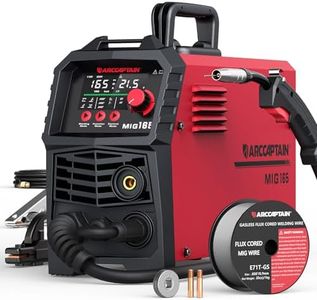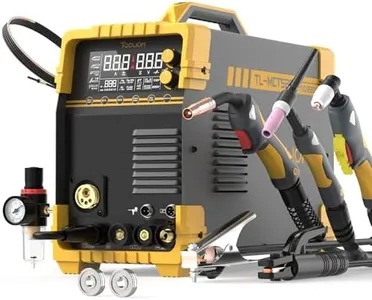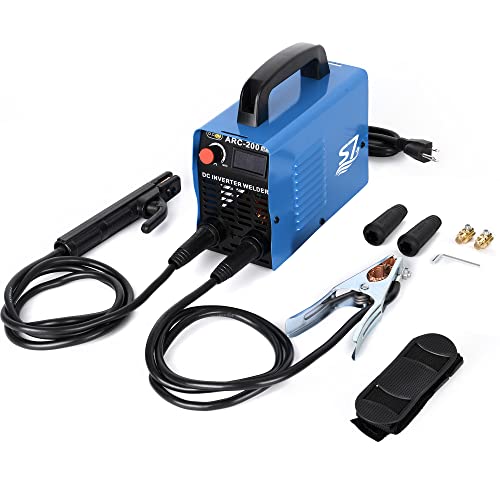10 Best Stick Welders 2025 in the United States
Our technology thoroughly searches through the online shopping world, reviewing hundreds of sites. We then process and analyze this information, updating in real-time to bring you the latest top-rated products. This way, you always get the best and most current options available.

Our Top Picks
Winner
YESWELDER MIG-205DS PRO MIG Welder, 200Amp 110/220V Dual Voltage MIG Welding Machine, 5 in 1 Gas MIG/Flux Core MIG/Spool Gun MIG/Lift TIG/Stick Multiprocess Aluminum MIG Welder, Spool Gun Compatible
Most important from
1981 reviews
The YESWELDER MIG-205DS PRO is a versatile welding machine capable of handling multiple welding processes including stick welding, MIG, flux core MIG, spool gun MIG, and lift TIG. It's suitable for hobbyists and professionals looking for a multipurpose machine. Its amperage range is quite broad, going from 30 to 205 amps, which gives flexibility for different welding tasks.
The digital display and IGBT inverter technology contribute to stable performance and precise control over welding parameters. Its duty cycle is decent, though more intensive users might find it limiting under heavy workloads. Dual input voltage (110/220V) enhances convenience, making it adaptable for various power sources. Portability is a strong suit as it weighs around 36 pounds and has compact dimensions, which is beneficial for those needing to move the welder around different work sites.
Electrode compatibility is another plus, supporting various types including aluminum with the use of a spool gun, which needs to be purchased separately. Arc stability is enhanced by synergic control, automatically adjusting voltage and wire feeding speed. On the downside, some users might find the need to purchase extra accessories, like the lift TIG torch and spool gun, an additional cost. Additionally, while the machine offers safety features like over-current, over-voltage, and over-heat protection, the initial setup might be complex for beginners.
Most important from
1981 reviews
Stick Welder, Maxstar 161 S Series, 240
Most important from
22 reviews
The Maxstar 161 S Series Stick Welder by Miller is designed for both professionals and hobbyists needing a reliable tool for metal joining tasks. With its 240V input voltage, it can handle a variety of jobs, making it versatile for applications like construction, maintenance, and repair. The welder is known for its portability, which is a major plus for users who need to move it between different job sites or workspaces. It’s also compatible with different types of electrodes, offering flexibility in the materials you can work with.
One of the key strengths of the Maxstar 161 is its arc stability, which provides a smooth and consistent welding experience. This is particularly beneficial for those who may be new to stick welding, as it helps in achieving clean welds more easily. The duty cycle is decent, allowing for good run time without overheating, which is crucial during extended projects.
It is essential to consider some drawbacks. The welder is corded electric, which means you’ll need access to a power source near your work area, potentially limiting where you can use it. Additionally, while it performs well for light to moderate tasks, those looking for heavy-duty performance might find it lacking.
Most important from
22 reviews
ESAB Rebel EMP 205ic AC/DC Multi-Process MIG/STICK/TIG Welder
Most important from
53 reviews
The ESAB Rebel EMP 205ic AC/DC Multi-Process Welder stands out as a versatile option for stick welding, among other processes like MIG and TIG. Its true all-process capability allows it to effectively handle a range of applications, including using 6010 electrodes, which is beneficial for those involved in industrial welding tasks. One of its key strengths is the sMIG technology that adapts to the welder's technique, providing stability and improving welding quality. This feature can help both seasoned welders and beginners achieve better results with less training time.
Portability is another highlight, with a weight of only 49 lbs, making it easy to move around various job sites. The durable design with a 5-handle roll cage adds to its ruggedness, suitable for demanding environments. The TFT multilingual display offers numerous adjustable settings like pre/post flow control and weld tuning, which allows for fine-tuning to achieve optimal performance.
There are some drawbacks to consider. Potential concerns include the learning curve associated with some advanced features, which might be overwhelming for absolute beginners. Additionally, the machine could be on the heavier side for some users, particularly if you're frequently moving it around.
